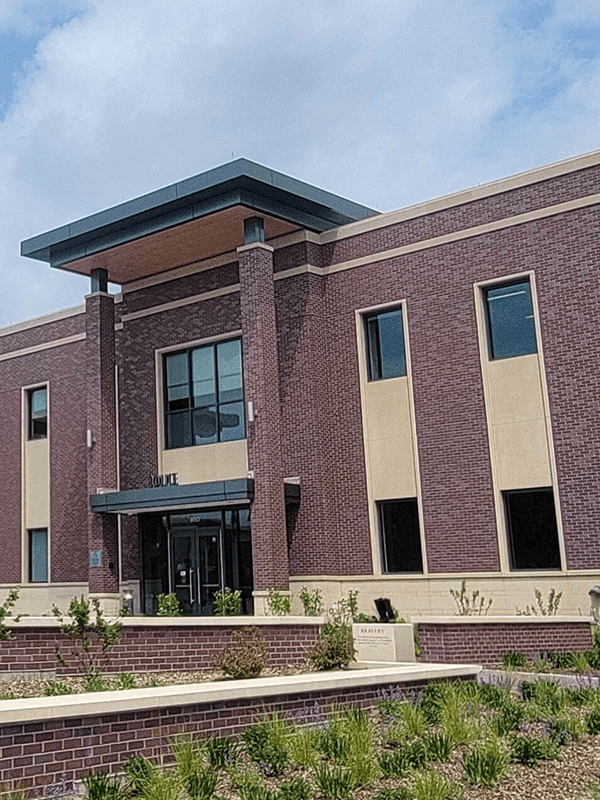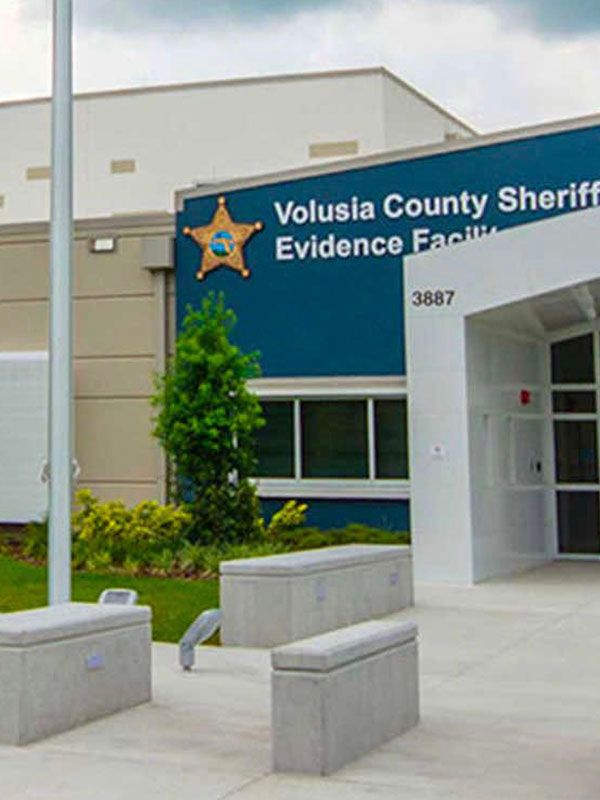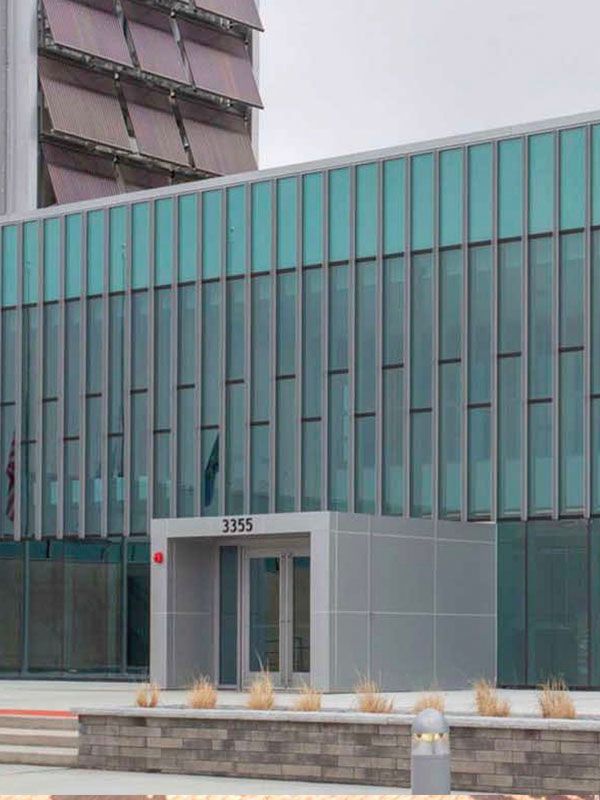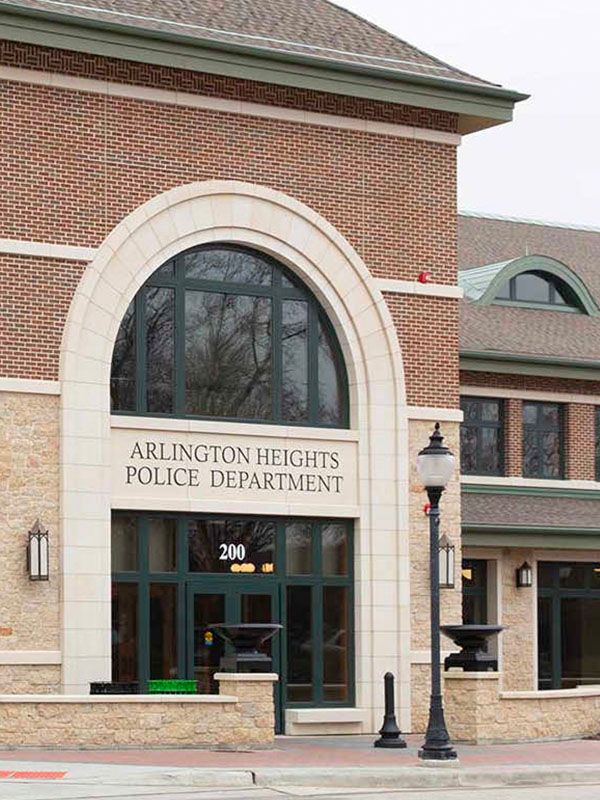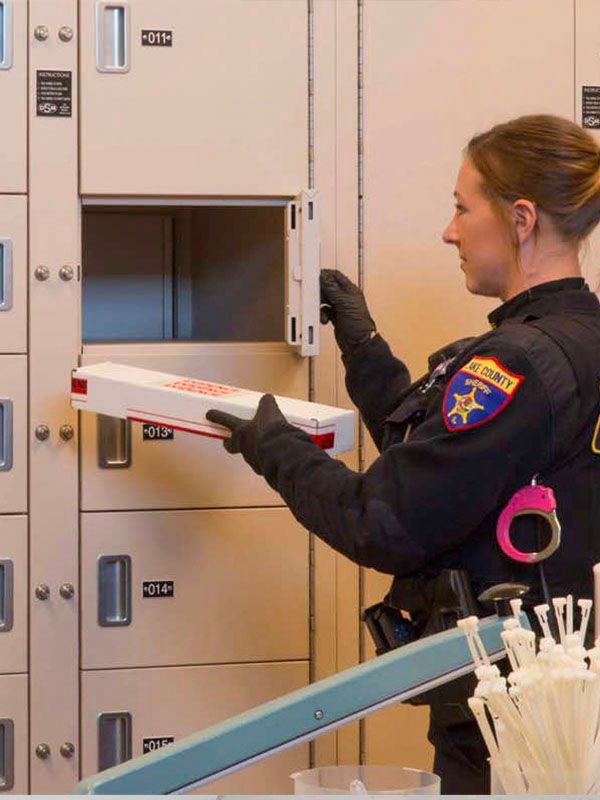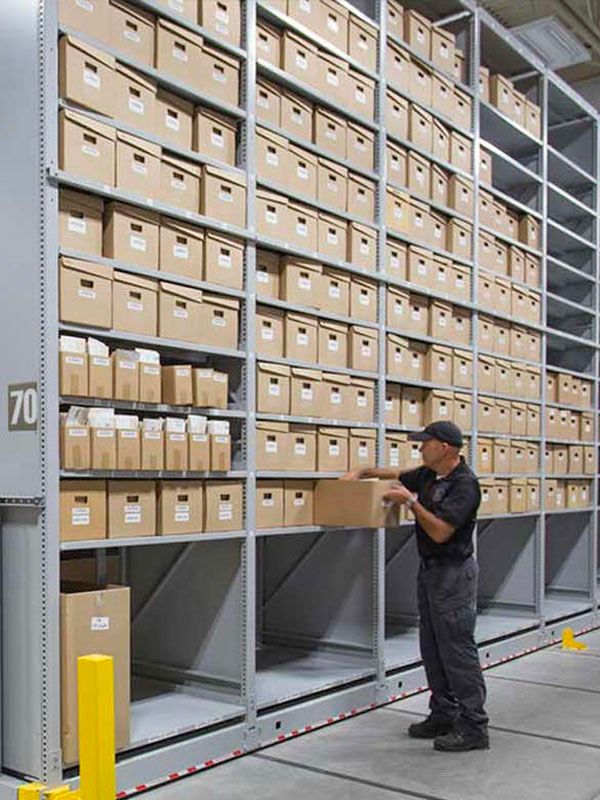Skokie, Illinois
Long-Term Evidence Shelving
Revamped long-term evidence shelving creates efficiency at Skokie Police Department.
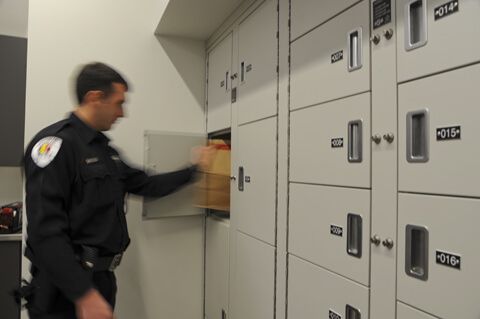
More Evidence Storage in Less Space
A converted janitor’s closet. That’s what the 23 evidence technicians at the Skokie Police Department had to work with. Evidence is processed 24 hours a day, seven days a week—and in the closet, space was so tight that technicians had to use the floor to package large pieces of evidence. Property was stored on fixed long-term evidence shelving and standard lockers. Refrigerated evidence was kept in a refrigerator secured with a padlock.
The storage solution was antiquated, and it was no longer acceptable. Skokie was experiencing a situation similar to many departments across the country—due to advances in DNA testing and the continuous reversals of cases, property and evidence acquisition was increasing while the ability to get purge it was decreasing.
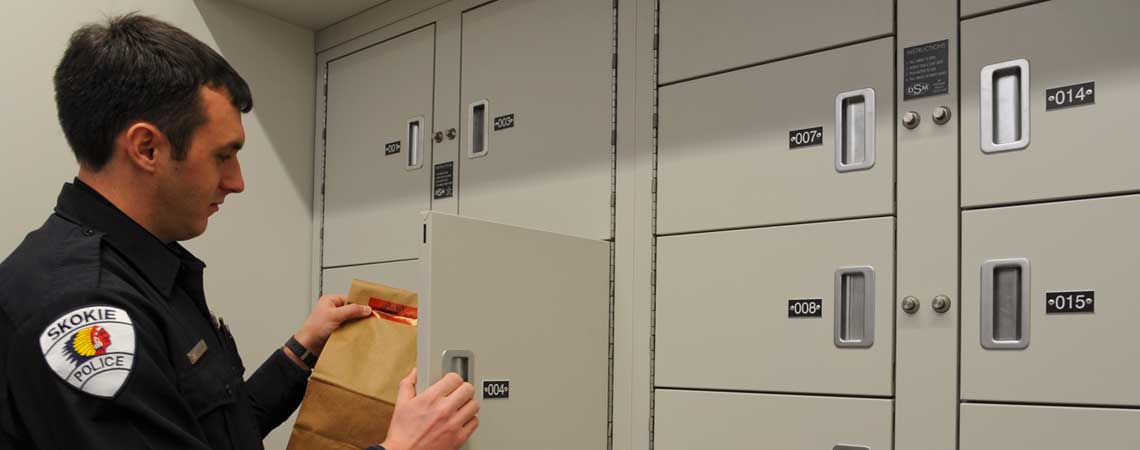
"Maintaining the chain of custody is paramount in the prosecution of criminal cases. We knew we wanted to go as high-tech as we could at the new facility for evidence storage."
- Barry Silverberg, Chief of Police at Skokie PD
Design Decisions in the Property & Evidence Room
More evidence meant more staff and less space, and as Skokie’s long-term evidence shelving and storage challenges grew, they also started planning to convert an abandoned bottling plant in the Village into a new building for the department. “Maintaining the chain of custody is paramount in the prosecution of criminal cases,” says Barry Silverberg, the department’s Chief of Police. “We knew we wanted to go as high-tech as we could at the new facility for evidence storage.”
Since Skokie’s long-term evidence storage actually began at the short-term level, Spacesaver worked with the department to install a bank of pass-thru evidence lockers to make sure the chain of custody was ensured during the critical short-term evidence period. In the pass-thru system, the lockers are built into a wall that separates the evidence drop-off area from the main Property & Evidence Room. Knowing that certain types and sizes of evidence would come through the room more frequently than others, the lockers were designed to fit the department’s exact needs both tall and small. Four refrigerated evidence components were integrated with the locker bank and replaced the padlocked refrigerator.

Evidence Storage Product Brochure
Download our Evidence Storage Product Overview Brochure for details on all your short and long term storage solutions.
Evidence Storage Product Brochure
Download our Evidence Storage Product Overview Brochure for details on all your short and long term storage solutions.

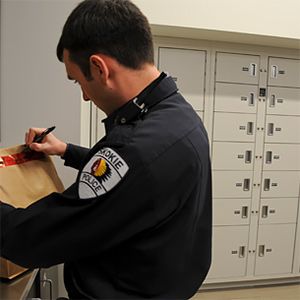
The overhauled system streamlined and tightened evidence processes for the department. When an officer deposits evidence inside one of the open lockers and locks it, no one can open it from that same side, and the custody of the item passes to the evidence technicians. On the other side of the locker bank, a single panel opens to expose all of the system’s compartments. A mechanism releases the locker buttons on the drop-off side of the system when this panel is opened.
Evidence Room Access
After a technician removes the evidence from the short-term lockers, it is bar-coded and placed into Skokie’s long-term evidence shelving system, where it stays until it is sent to a crime lab for further analysis or retrieved for a case.
As there’s no telling when—or if—a piece of evidence will ever be able to be retrieved or destroyed, the department knew they needed a way to efficiently compact their current long-term evidence holdings as well as plan for future items. Skokie’s Evidence Technician Program was one of the finest programs in Northern Illinois, and Silverberg wanted to keep it that way.

Download The Story For More Information.
Evidence is just one part of Skokie Police Department’s storage story.
Download The Story For More Information.
Evidence is just one part of Skokie Police Department’s storage story.

Moveable Evidence Storage
A high-density mobile storage system—with carriages 10 feet high and 18 feet long—was installed in the new Property & Evidence Storage Room, and was outfitted with a diverse range of metal shelving and drawers and a lockable unit for pistols and guns. As part of Skokie’s goal was to not need a separate room to securely store weapons, the system organized the guns and resulted in a big cost savings for the department. Now, the bar-code system for evidence works in tandem with the system that stores it, creating a organized system that allows technicians to not only process evidence quickly, but find it faster for use in a case.
“The mobile system lets us do so much more with less,” Silverberg says. “Combined with the evidence lockers, it allows us to tighten the chain of custody and do what we do more efficiently than ever.”

